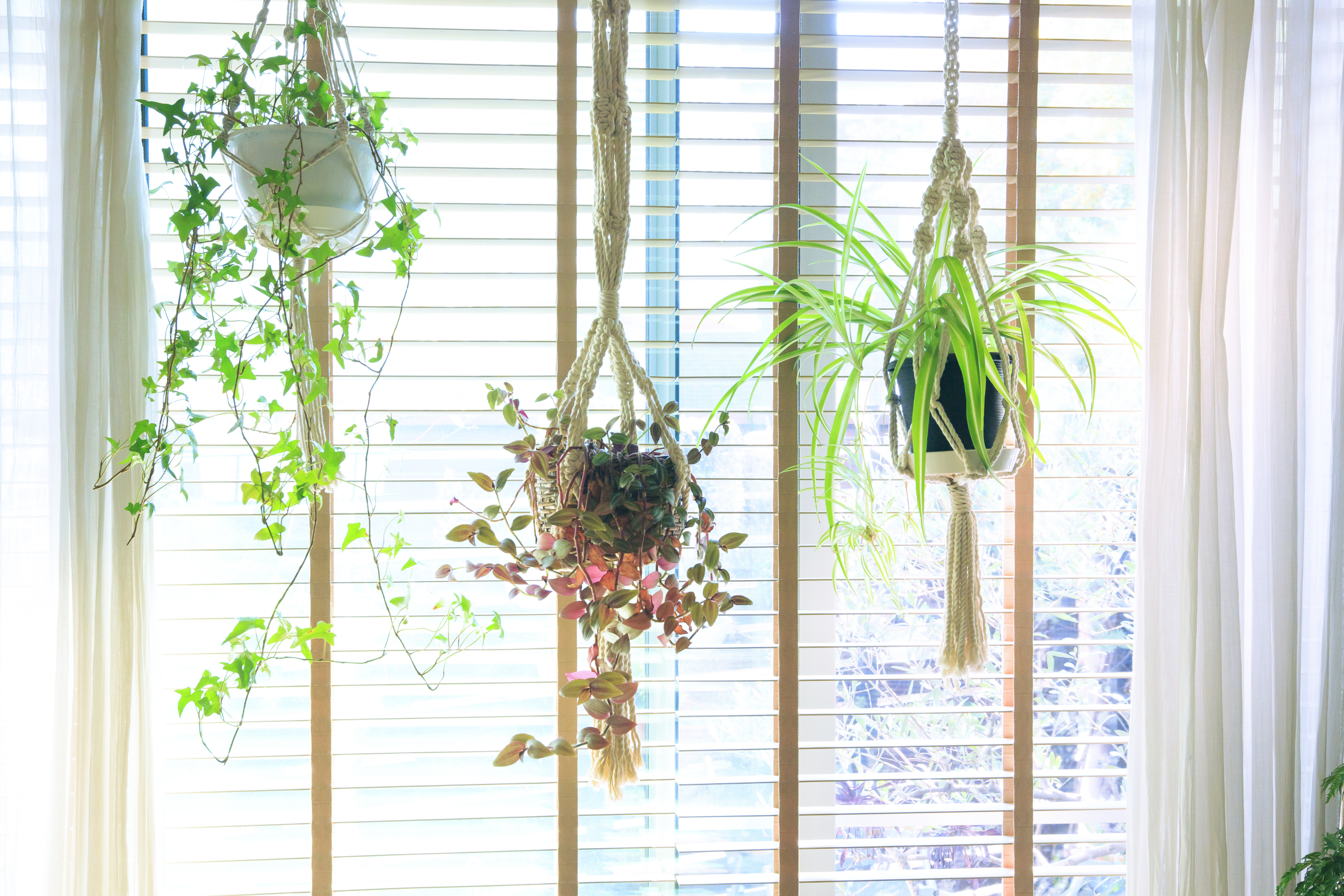Introduction:
Hanging baskets are a versatile and stylish way to bring greenery and beauty to any indoor or outdoor space. Whether suspended from a balcony railing, pergola, or ceiling hook, hanging baskets add vertical interest, create visual impact, and maximize growing space in areas where ground space is limited. In this guide, we'll explore the art of creating hanging gardens with hanging baskets, from selecting the right plants and containers to designing and caring for a lush and vibrant display that will elevate your plant game to new heights.
The Charm of Hanging Gardens:
Hanging gardens offer numerous benefits and appeal to gardeners for several reasons:
-
Space Optimization: Hanging baskets allow you to make the most of vertical space, transforming bare walls, fences, or ceilings into lush green displays without taking up valuable ground space.
-
Versatility: Hanging gardens can be installed in a variety of locations, from balconies and patios to porches, pergolas, and indoor living spaces, providing flexibility and versatility in garden design.
-
Visual Impact: Hanging baskets add visual interest and dimension to any setting, creating cascading displays of foliage, flowers, and texture that draw the eye and create a focal point or statement piece.
-
Easy Maintenance: Many plants suitable for hanging baskets are low-maintenance and tolerant of a wide range of growing conditions, making them ideal for busy gardeners or those with limited time for gardening chores.
Designing Your Hanging Garden:
Follow these steps to create a stunning hanging garden with hanging baskets:
-
Selecting Plants:
-
Choose plants that are well-suited to hanging baskets and the growing conditions of your chosen location, considering factors such as sunlight exposure, water requirements, and climate compatibility.
-
Opt for a mix of trailing, cascading, and upright plants to create visual interest and balance in your hanging garden.
-
Choosing Containers:
-
Select hanging baskets or containers that are appropriate for the size and growth habits of your chosen plants, ensuring adequate drainage and stability when suspended.
-
Consider the material, style, and colour of the containers to complement your garden design and aesthetic preferences.
-
Arranging Your Garden:
-
Plan the layout of your hanging garden, considering factors such as plant height, spread, and growth habit, as well as the desired visual impact and overall composition.
-
Experiment with different arrangements and combinations of plants to create a balanced and harmonious display that flows seamlessly from top to bottom.
-
Preparing the Soil:
-
Use a well-draining potting mix specifically formulated for container gardening, adding perlite, vermiculite, or coconut coir to improve aeration and drainage.
-
Fill each hanging basket with soil, leaving enough space to accommodate the root ball of your chosen plants.
-
Planting Your Baskets:
-
Plant your chosen plants in the prepared hanging baskets, positioning them carefully to ensure even spacing and distribution throughout the container.
-
Gently firm the soil around the root ball of each plant, ensuring good root-to-soil contact and stability when suspended.
-
Watering and Maintenance:
-
Water your hanging garden regularly, checking soil moisture levels and adjusting your watering routine as needed to keep the soil evenly moist but not waterlogged.
-
Monitor your plants for signs of stress, pests, or disease, and provide appropriate care and maintenance, such as deadheading spent flowers or pruning overgrown foliage.
Tips for Hanging Garden Care:
-
Sunlight: Most plants suitable for hanging baskets prefer bright, indirect sunlight, although some may tolerate partial shade or full sun depending on their specific requirements.
-
Watering: Water hanging baskets thoroughly but infrequently, allowing the soil to dry out slightly between waterings to prevent overwatering and root rot.
-
Fertilizing: Feed your hanging garden with a balanced, water-soluble fertilizer during the growing season to promote healthy growth and vibrant blooms. Follow the manufacturer's recommendations for application rates and frequency.
-
Deadheading: Remove spent flowers and faded foliage regularly to encourage continuous blooming and maintain the overall appearance and health of your hanging garden.
Conclusion:
Hanging gardens are a beautiful and practical way to add greenery and life to any space, whether indoors or outdoors. By following the steps outlined in this guide and providing appropriate care and maintenance for your hanging baskets, you can create a stunning display that will delight the senses and elevate your plant game to new heights.
So, unleash your creativity, experiment with different plant combinations and arrangements, and let your hanging garden flourish and thrive. With a little care and attention, your suspended oasis will become a focal point of beauty and tranquility in your home or garden for years to come.
Happy hanging gardening!

